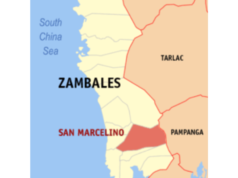As a matter of fact, as early as October last year – less than a month after the proclamation of martial law – the rebels in Marawi City (Lanao del Sur), confusing their signals, precipitately started the rebellion, overwhelming some Constabulary detachments. They burned the Philippine Army headquarters, took over complete control of the city – notably, Mindanao State University, where the Japanese Ambassador, Toshio Urabe, was almost captured by the rebels – and cut off all radio and road communications to other parts of the province.
In late February and early March, the summer plan of 1972 belatedly went into operation in Cotabato when 6,000 rebels overran most of the towns, threatening the IV PC (Philippine Constabulary) Zone headquarters in Parang
as well as Cotabato City, destroyed the bridges and immobilized all transportation within the province.
Before that, Basilan was almost completely occupied by several thousand rebels; Zamboanga del Sur was plunged into a state of turmoil. Again before January, government troops had practically lost the province of Sulu,
except for the poblaciones, to numerically superior rebels and secessionists.
Only the superior training and courage of government troops, their heroic and alert leadership, and the support of both Muslims and Christians, organized and doing battle as self-defense and strike forces, turned the tide and recovered most of the beleaguered areas for the Republic of the Philippines.
What relation do these apparently strictly military actions have on my decision for a quick ratification of the Constitution? The answer is that these military events were dominated by a political plan.
The Muslim secessionist rebels had somehow convinced their financial supporters abroad (openly identified in the international press) that there was a civil war in the Philippines and this was an ideal condition for establishing a government separate from that of the Republic of the Philippines, allied, if necessary, with a neighboring country. This step would be followed by a demand from the United Nations Security Council for the right of self-determination, following the formula that successfully set up Bangladesh as a state independent of Pakistan. The date for the accomplishment of the plan was January 1973.
The plan was almost a political masterpiece. My options were few. The hostile reaction of the American press to the declaration of martial law destroyed for us any immediate expectation of United States aid – at the time we badly needed materiel. And, then, of course, the assaults in Mindanao were calculated to divide our forces between Luzon and Mindanao.
The political plan, along with its clever, if crude, military strategy, might very well have worked if I had vacillated about the risks of immediately ratifying the Constitution. The danger of a supposedly separate and independent government set up in one or another municipality in Mindanao was apparent, and would at once hold in doubt our sovereignty in the area.
The only possible maneuver dictated by the national interest was to meet this incipient “splinter state” with a government and a republic duly supported by the great majority of the people, especially the Muslim citizenry, operating under a constitution of their own making and already ratified so as to be enforceable by the government.
Time, of course, was of the essence. The secessionist plan had been set back a few months, but out intelligence sources from the rebel camps were quite certain that the secessionists were determined to follow through their plans – especially that of setting up a separate government – before the end of January this year.
More than anyone, I knew the vulnerability of the Philippine Republic in the Muslim areas; martial law was a success in the rest of the country, but our southern backdoor was strategically vulnerable to the secessionists. An excruciatingly careful estimate of the situation convinced me that if the entire citizenry, including the residents of the Muslim provinces, were to approve the new Constitution by a show of hands through the barangays, this would dishearten the rebels and the secessionists, commit the fence-sitters, and derail the plan for separation.
I could only achieve this advantage by pushing through the barangay plebiscite by the middle of January. Necessarily, some formalities had to be set aside, such as the secret or written ballot and allowing a month or two of full discussions of the Constitution.
I was taking a legal and constitutional gamble, to be sure, but at stake was the integrity of the sovereign state rather than a technicality of law.
As it turned out, however, the results of the plebiscite, no matter how much it was questioned by a few, achieved the purpose I had envisioned. The secessionist plan was upset.
Obviously, neither armed might nor exhortation would have sufficed to save the integrity of the sovereign state had the secessionists succeeded in their plan to install a separate “sovereignty.” On the other hand, prudent statesmanship constrained me from revealing to our people the full dimension of the danger to themselves, their country, and their progeny.
NOW SPEAKING from the grave, okay, from his 1973 book Notes on the New Society of the Philippines, President Ferdinand E. Marcos finds relevance in the current of events besetting the Filipino nation today. The same arena of battle. A different time. When leaders were men. Shame.




